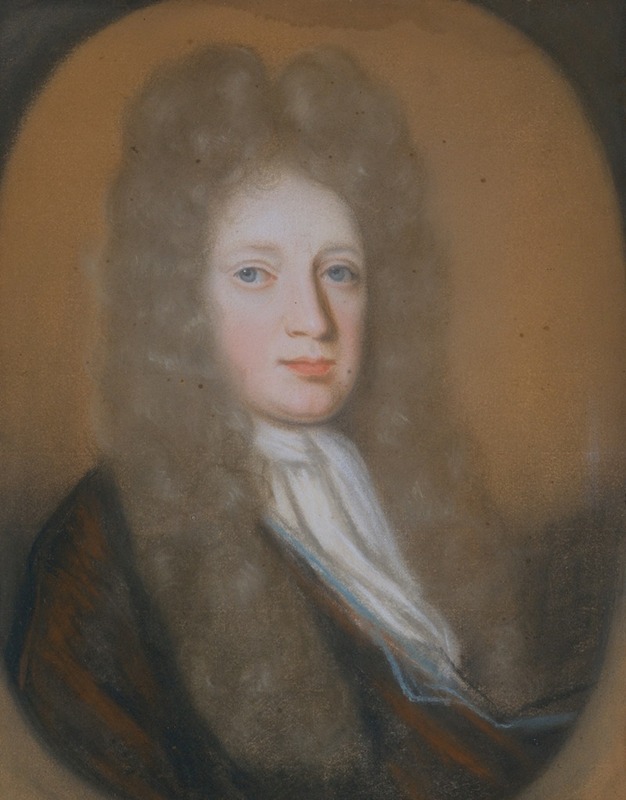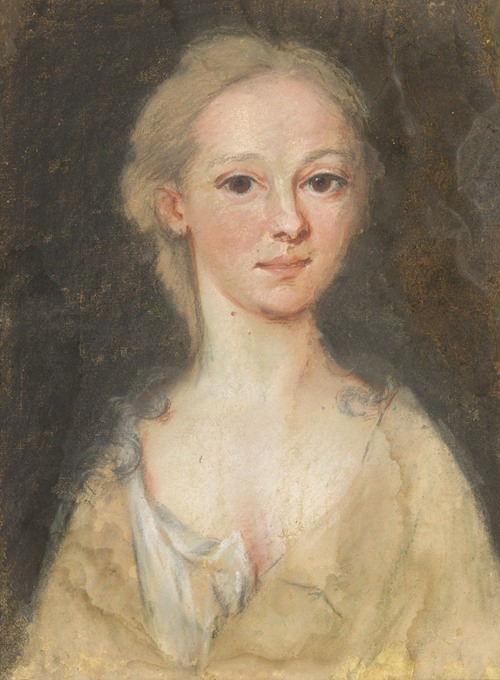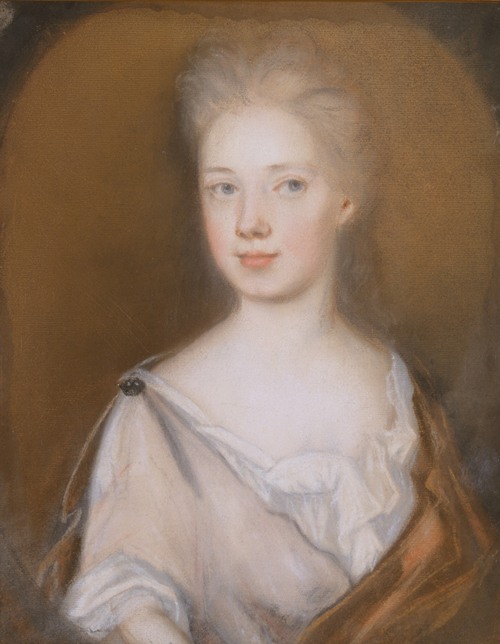
Henrietta de Beaulieu Dering Johnston was a pastelist of uncertain origin active in the English colonies in North America from approximately 1708 until her death. She is both the earliest recorded female artist and the first known pastelist working in the English colonies, and is the first portraitist known to have worked in what would become the southern United States.
Both the date and place of Johnston's birth are unknown; it has been suggested, and is generally accepted, that she was born in northwestern France, near the town of Rennes. Her parents, both French Huguenots, were Francis (possibly Cézar) and Suzanna de Beaulieu, and the family immigrated to London in either 1685 or 1687. In 1694 Henrietta married Robert (possibly William) Dering, fifth son of Sir Edward Dering, 2nd Baronet,, and his wife Mary; she and her husband then moved to Ireland. It was during this time that Johnston began to draw pastels. Her earliest portraits depicted a number of powerful people to whom she was related by marriage; among these were John Perceval, later to become Earl of Egmont, and one of the Earls of Barrymore. Her earliest surviving pastel dates to 1704.
Dering's husband died in about 1704, leaving Henrietta a widow with two daughters. In 1705 she married again, this time to Anglican clergyman Gideon Johnston, a graduate of Trinity College, Dublin then serving as the vicar at Castlemore. Two years later, he was appointed by the Society for the Propagation of the Gospel in Foreign Parts to serve as commissary of the Church of England in North and South Carolina and the Bahama Islands. He was also to serve as rector of St. Philip's Episcopal Church in Charleston. The couple's time in the colonies was hard; Johnston was frequently writing the Society to request payment of his salary, which was often delayed, and their lives were further hampered by illness, lack of supplies, and distance from family. In one of his letters to his patron Gilbert Burnet, written in 1709, Johnston mentions that "were it not for the assistance my wife gives by drawing of Pictures (which can last but a little time in a place so ill peopled) I should not be able to live", indicating that Henrietta had again taken up her drawing to augment the couple's income. Another letter, dated a year later, reveals that she had run out of drawing materials and suffered "a long and tedious Sickness". Johnston made one return trip to England, in 1711–1712; her husband, too, returned there once, from 1713 to 1715. He died in a boating accident in 1716, not long after returning to Charleston.
Little is known of Johnston's later life in the colonies. She is known to have traveled at some point to New York City, as four portraits dated 1725 exist depicting members of a family from that city. She returned to Charleston at some time before her death in 1729.
Johnston and her second husband are buried together in the cemetery of St. Michael's Episcopal Church in Charleston. One of her daughters by her first marriage, Mary Dering, later became lady-in-waiting to the daughters of George II.


